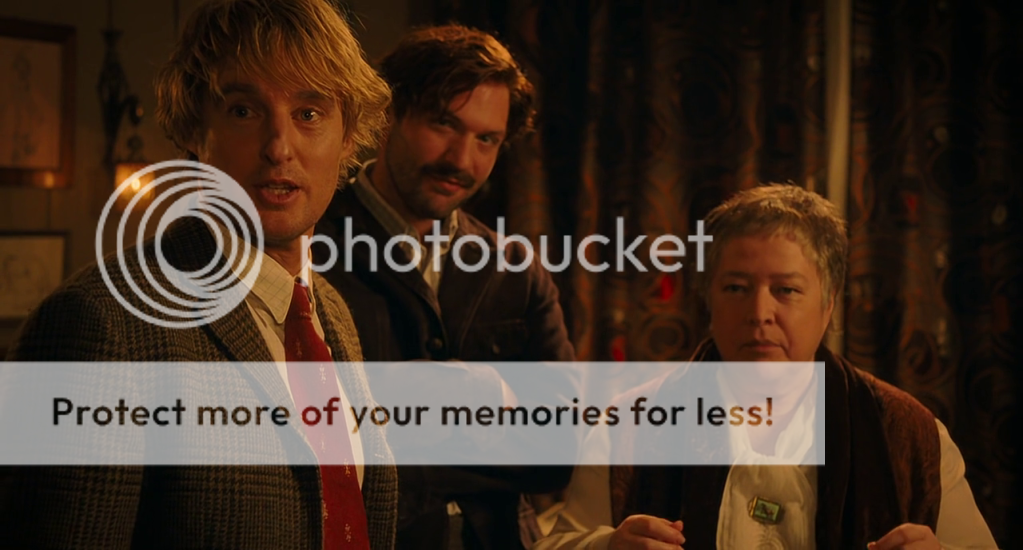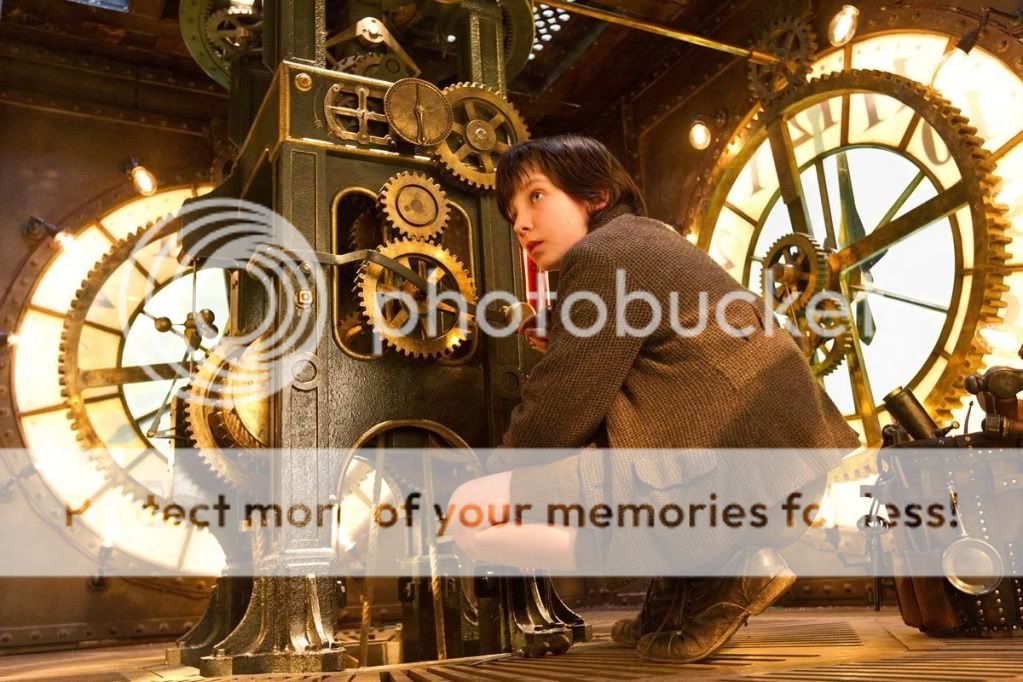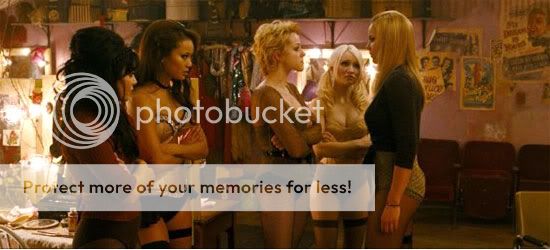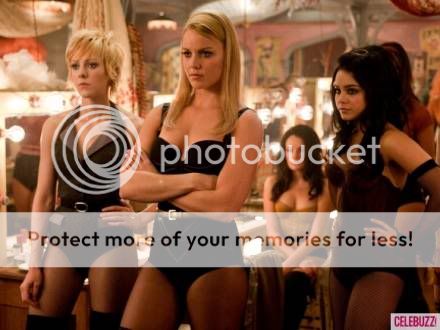I don’t like making top 10 lists because it makes me seem like a film snob. But I am a film snob, and somehow I still dislike making top 10 lists! Can't win them all...
So seeing that almost everyone else out there has compiled a top 10 (or 20) list, here is my list for the best 10 films of 2011:
10. The Adventures of Tintin

What can I say? It's Spielberg to the rescue! And not only is this a great animated film and a great head start for the Tintin franchise, it's also a great Spielberg film. Although entirely motion captured and rendered within a computer, the cinematography of the film showcases the "classic Hollywood" style of filmmaking. From the framing to the dialogue to the exhilarating action sequences, all the character from the pages Tintin, and their universe have found their North American market (finally! and it only took slightly over seven decades!) and the end result is exciting and nothing short of spectacular.
09. Rango

Gore Verbinski’s Rango is hilarious, smart, inventive, and, most importantly unique. It’s ILM’s (Industrial Light and Magic) first 3D-animated film (shot and presented only in 2D, and thankfully!) and the reason for its great success is that it doesn’t pretend to be an animated film. It’s shot like a real film and sometimes even looks live-action (much like Tintin above). The story, heavily borrowing from Chinatown (1974) is recreated in a refreshing way, containing a terrific sense of humor and outstanding voice and emotion-captured performances. This is a jewel of a film, a contemporary animated classic and, ultimately one of the year’s best films.
08. Midnight in Paris

Midnight in Paris is Woody Allen’s best film since Match Point (2005). It’s remarkably original (well, it won the Best Original Screenplay Oscar), a breath of fresh air, and it was shot entirely in the digital medium (Woody was experimenting with digital to see whether he’s want to shot in that format from then on and as a result, it's a very pretty looking film). It also boasts terrific performances all around. Most importantly, it's managed put a smile on my face right from its start and the smile remained until the very end of the film. Also, Midnight in Paris doesn't get old with repeat viewings.
07. The Tree of Life

I love every film that Terrence Malick has made and The Tree of Life is an exceptional experience. It not only utilizes Malick’s unique storytelling methods of a none-linear approach to traditional narrative but even dares to go back to the beginning of time. That’s right! The film starts in the 1950s, flashes to the beginning and the creation of our universe (for a sequence that's more than 15 minutes in length and is breathtaking and achingly beautiful) and then comes back around to continue the story that it began telling. It’s uplifting, magical, beautiful to look at, contains amazing performances, and is Malick’s most ambitious film to date. It needs to seen and our senses need to be challenged. And its cinematography is magnificent. See it; experience it.
06. Melancholia

I detest all of the Lars von Trier films that I watched in the past, but that all stopped when I watched Antichrist (2009). Then, with Melancholia I was on board the von Trier train. Melancholia, depicting depression as harshly as it possibly could has its protagonist in such a terrible state of mental and physical that during the magical night of her wedding, she summons a giant planet (named Melancholia) that’s on a collision course with the Earth. The film is breathtakingly gorgeously shot, powerful, remarkable, and maddening. It examines the ideal of existence and nothingness and as a result it’s quite the emotionally involving and draining experience. But in a highly positive way.
05. Drive

Drive is my favorite film of 2011. Director Nicolas Winding Refn won the Best Director award at Cannes, and rightly so. Here, his take on the mythology of a superhero is harrowing yet brilliant. What we think a hero would be like in real life is embodied within a sociopath (Gosling), one that has psychotic tendencies and who likes to drive around at night for no apparent reason except that he likes to drive around at night. He is the shadow of a man, without real emotions or connections to other human beings and when he makes contact with another lost soul he ends up destroying everything that's worth anything, including a potential relationship.
It’s not a story depicting self destruction; it’s about an isolated spirit that wants to be a part of someone else’s life but cannot, for he is, as aforementioned, a sociopath with psychotic tendencies.
Did I mention that he’s largely mythological and that the film is gorgeously shot and is hugely stylized? Well, there you go.
04. Hugo

Hugo is one of Martin Scorsese’s best films of the last couple of decades. Here we have one of the greatest living directors, a living legend who tackles the quasi-semi-autobiographical (yeah, I split it into thirds) story of the later years of the wizard of the cinema: Georges Méliès.
This is the most competently shot, lit, edited, and photographed film of the year and every single frame of it is littered with the beauty that can only come from a master on par Scorsese’s caliber. It's Scorsese’s first attempt at 3D filmmaking and as a result it puts every 3D film ever made to shame (even James Cameron admitted that Avatar’s been put to shame!), and on every level. If it’s still in theatres and in 3D, I highly recommend that you watch it. And this is coming from a person that abolishes the advent of 3D films.
Hugo and the following three films are some of best films that I have seen in many years.
03. Take Shelter

A harrowing portrait of a man who may or may not be suffering from schizophrenia is told brilliantly here, not with a grand buffet of special effects and CGI but with subtlety and masterful acting performances. It centers on a man who, through increasingly unpleasant and bizarre visions believes that a storm is approaching, but one that seems more supernatural than normal; as if an apocalypse is to come with the storm. Michael Shannon plays the man, Curtis and his performance is all powerful and nothing short of astounding; groundbreaking even.
The film never actually tells us what’s going on, whether Curtis's terrible visions are real or are just part of his psyche that's playing tricks on him and Shannon brings forward his best performance to date. He’s only at the start of his career and already he’s on an A-list caliber.
The direction and cinematography are subtle and the film’s style and pacing is a deliberate slow burn; tension is raised from the start and never lets up, and this film is a true masterpiece.
02. A Separation

A Separation has the best screenplay of 2011. It starts with the separation of a man and his wife, living in contemporary Iran, and we follow the man more as his life tumbles out of control. The film’s focus is on Iran’s legal system, which is remarkably strict and yet simultaneously broken; religion, and how we can actually hurt others due to our strong religious beliefs; taking care of a parent who suffers from Alzheimer's; and living with parents that are separated.
After what transpires in the first 20 minutes, which I won't ruin, the rest of the film depicts several lives that spiral out of control and a snowball tumbles downhill at an alarming speed. The domino effect is also an accurate depiction of what happens in the film and this is masterful complex, and brilliant storytelling.
01. Shame

Writer/director Steve McQueen (Hunger, 2008) delivers a straightforward, no holds barred account of a man, Brandon (Michael Fassbender) who suffers from sex addiction. Unlike any other film or television series that's centered on the concept of sex addiction, Shame makes the experience almost unbearable to watch.
Brandon needs to ejaculate several times a day in any manner possible (at home on his own, or at work, with prostitutes, one night stands, etc); it's become a compulsion, seeing that it's an addiction. He hates that his life has turned into a boring pit of nothingness, filled with hundreds of porno magazines, paid sex websites, and prostitutes galore. He hates that he cannot take pleasure in his own sexual acts and that he hasn’t any feelings, or more correctly emotions towards others. He can’t live with other people, can’t hold an actual relationship, and can't get married. It's a tough life and seeing that Brandon is a successful, wealthy New Yorker shows that this can happen to anyone. Here is a man that has it all: money, looks, and sex appeal and he can't even go on a normal date with a co-worker.
Shame is a harrowing, painful, and brilliant depiction of a damaged human being that at most times is terribly hard to watch but is ultimately a very rewarding experience. This is the best drama that I’ve seen all year and one of the toughest films that I’ve ever watched.
Shame is the best film of 2011. And remember: if you want to stop watching the film at any point out of utter disgust or out of sadness, then Steve McQueen and Michael Fassbender have done their jobs.



















